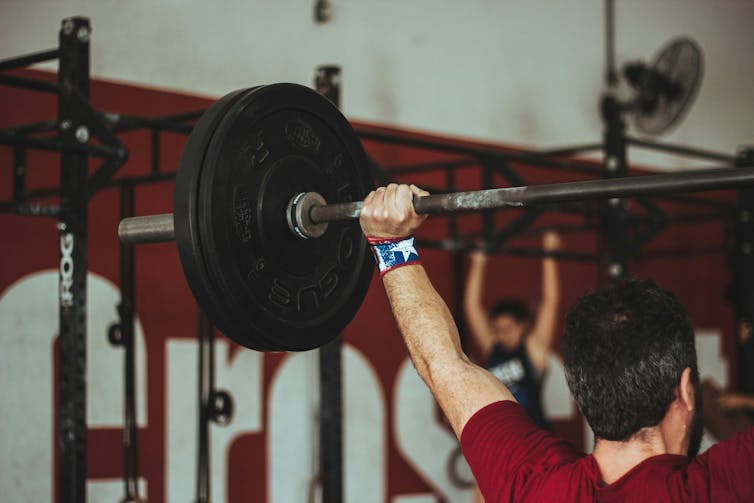Creatine supplementation is booming among those seeking greater muscle size and performance.
Although creatine is certainly not a new discovery, with research dating back to the 1830s, its popularity and sales have continued to grow, and have expanded beyond bodybuilders and athletes to clinical applications and benefits beyond muscle performance.
Today, creatine stands as one of the most researched supplements, and new findings continue to support its use for consistent and measurable results in bodybuilding, fitness and overall health.
While creatine is naturally found in foods like red meat and seafood, and also produced naturally in the body, supplementation has surged in popularity, especially among young men.

(Unsplash/Gyan Shahane)
This growth in popularity is largely due to young men’s desire to increase muscle size and muscle strength. Several meta-analyses have looked at the effects of creatine supplementation during resistance training on properties of muscle, and support its use and effectiveness when combined with resistance training.
Simply put, creatine can help maintain energy levels, especially during short-duration, high-intensity exercise like weight training.
Creatine’s role in the body
From a physiological perspective, once in the body, the majority of creatine is stored in the muscle as phosphocreatine (PCr). In this form, it can help maintain energy levels through the maintenance of adenosine triphosphate (ATP), which is the body’s primary energy currency.
Because creatine supplementation increases intramuscular levels of creatine, it may enable resistance training at a higher intensity and for longer durations, leading to greater gains in the gym.
Although creatine’s impact on muscle performance may be more well known, it does not paint the whole picture. Research is revealing creatine’s positive impact outside the muscular system, showing positive effects on the storage and metabolism of glucose, blood-flow dynamics, anti-inflammatory effects and positive benefits for cognition and brain function, to name a few.
Dosage and safety
From a research perspective, dosage recommendations for men can vary, but typically either five grams of creatine daily, or a customized dosage based on bodyweight of (0.1 grams per kilogram per day) have been shown to be well-tolerated and effective for increasing muscle performance.
From a food intake perspective, to consume about five grams of creatine in the diet, an individual would have to consume about 1.15 kilograms of beef, or about a kilogram of pork, for example. This means even a diet that is high in creatine-containing foods may not be enough to maximize its benefits.
The high calorie content of eating enough of these foods to reach the target creatine intake makes supplementation a practical and appealing option, both for ease of consumption and calorie considerations.
Also, from a cost perspective, at about $0.50 per serving, it’s an easy and cost-effective strategy to reach creatine intake goals. With new forms of creatine seemingly being released all the time (capsules, gummies and flavoured powders), it makes it easy to maintain intake.

(Unsplash/Victor Freitas)
Regarding the safety of creatine supplementation, a position stand paper by the International Society of Sports Nutrition concluded that creatine supplementation poses no greater adverse effects in healthy individuals compared to placebo, even with higher dosages.
With that being said, creatine hasn’t been immune to its share of negative claims. Anecdotally, creatine may have some whispers of undesirable side-effects; however, research looking at common myths and misconceptions of creatine (including concerns about water retention, hair loss and dehydration) have largely removed many of the fears.
Resistance training is key
It’s important to note that while creatine consumption on its own may still show some positive effects, it is largely creatine consumption in combination with resistance training that leads to benefits.
Resistance training can increase measures of muscle growth and performance (muscle power, muscle strength and muscle endurance) and it’s the combination of creatine with resistance training that will maximize its effects. So resistance training is a paramount component to the positive effects of creatine.
Of course, creatine is not an essential nutrient. Individuals can see improvements in muscle growth and muscle performance while focusing on the intake of high-quality and nutrient-rich foods, a well-designed individualized resistance training program, combined with adequate high-quality sleep and proper stress management without the need to supplement creatine.
A healthy lifestyle is the foundation of well-being, including the groundwork for effectively building muscle.
Creatine supplementation has made its way into the hands of those seeking the secret to greater muscle size and performance. It is well researched and widely accepted, and it continues to increase in popularity due to the positive effects when paired with a solid resistance training program, its safe risk profile when consumed at evidence-based dosages and its low-cost.
While creatine supplementation is not essential, it may be a practical, affordable and effective choice for those seeking muscle growth benefits and beyond.
Source link

:max_bytes(150000):strip_icc()/VWH-GettyImages-1924876062-5a807c20b3d141f8b76b7f0396578e32.jpg)